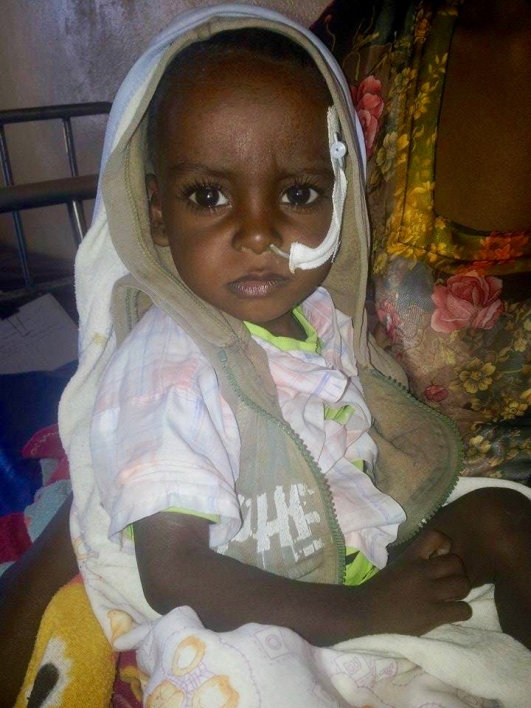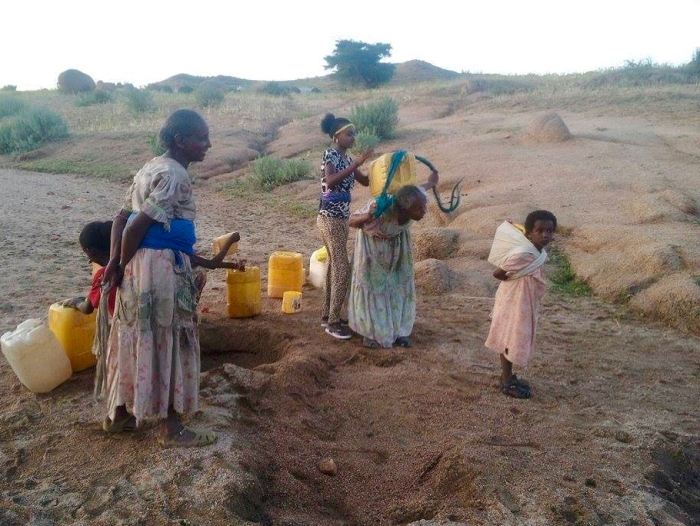Eritrea: drought, hunger and malnutrition – the evidence

In February I published an article pointing out that Eritrea was not immune to the drought that had hit large parts of the Horn of Africa.
This was based on a UN assessment, which I quoted.
As I said then: “Despite official denials from President Isaias that there is any food crisis and a rejection of aid, the UN has – quietly – revealed the extent of the suffering.”
Now we have evidence smuggled from inside the country by Arbi Harnet (Freedom Friday) activists. This is information was sent with the photographs.
Martin
Effect of draught…a victim of malnutrition and kwashiorkor – a severe form of  malnutrition. This kind of images are common on most remote clinics.
malnutrition. This kind of images are common on most remote clinics.
The child kid looked healthy but his buttocks shows the real effect of his malnutrition.
People have been forced to draw water from pits dug into the Mereb river.
It is the main source of a cholera outbreak in the area.
So far 1342 patients have been registered and 13 deaths have been reported in one makeshift clinic alone.
The numbers are worst in Upper Gash where the outbreak was first reported first.
But the exact figures are not known.
The government responded – although very late lately – by sending teams of doctors and local nurses to the areas hit by the epidemic.

Roads have been closed, transport halted and movement into and out of the effected areas has been tightly controlled.
Members of the local militia, the police and the army are closely restricting movement.
Medics have not been happy with response.
Samples from patients have to be sent to the national laboratory in Asmara, to be cultured and identified.
This alone slowed the response and increased the suffering of many patients.
Medical teams were forced attend the cholera victims in remote areas, leaving their the patients in hospital unattended.

The other challenge has been transport.
The epidemic has struck the most marginalized area of Eritrea where there are no ambulances or alternative forms of transport.
If they cannot walk they end up being carried on stretchers.
Medics say there is constant pressure from security agents who warn them warn them not to take any photos not and tell any one about what is taking place.
In some places they have even confiscate the medic’s phones.


![[AIM] Asmarino Independent Media](/images/logo/ailogo.png)